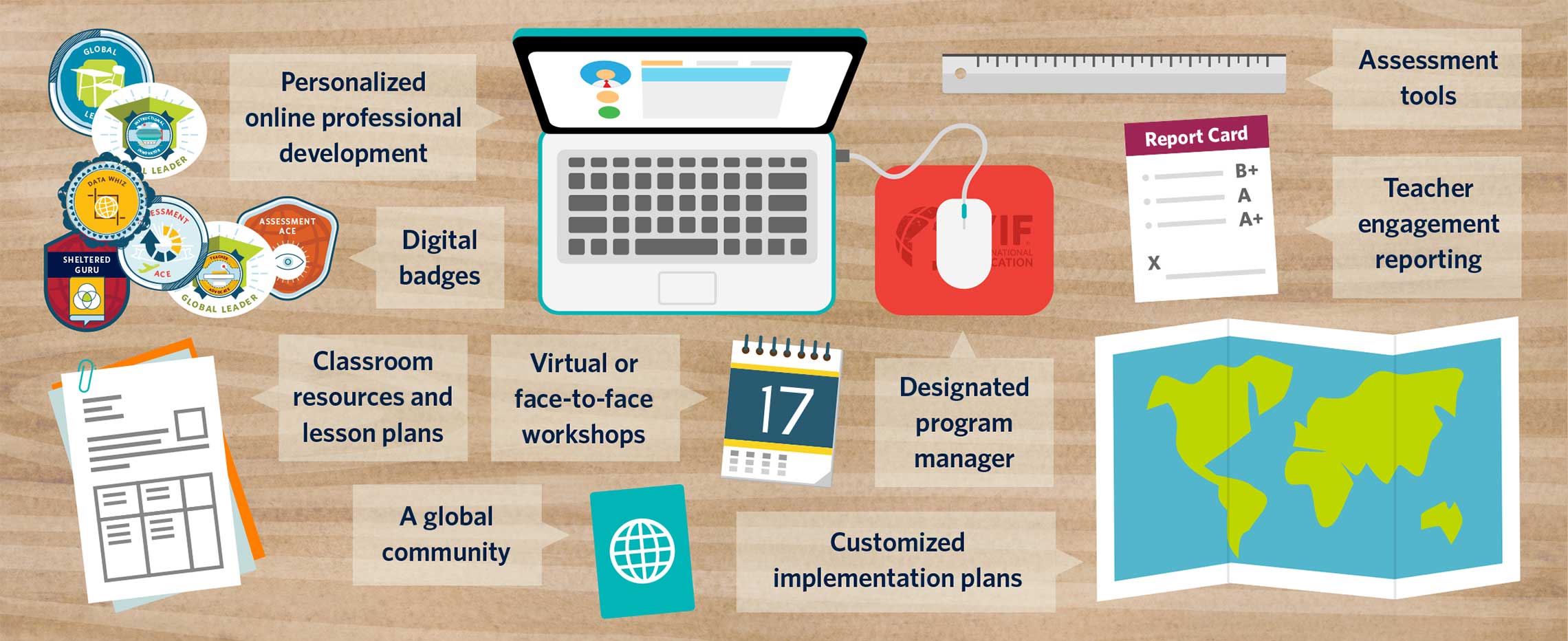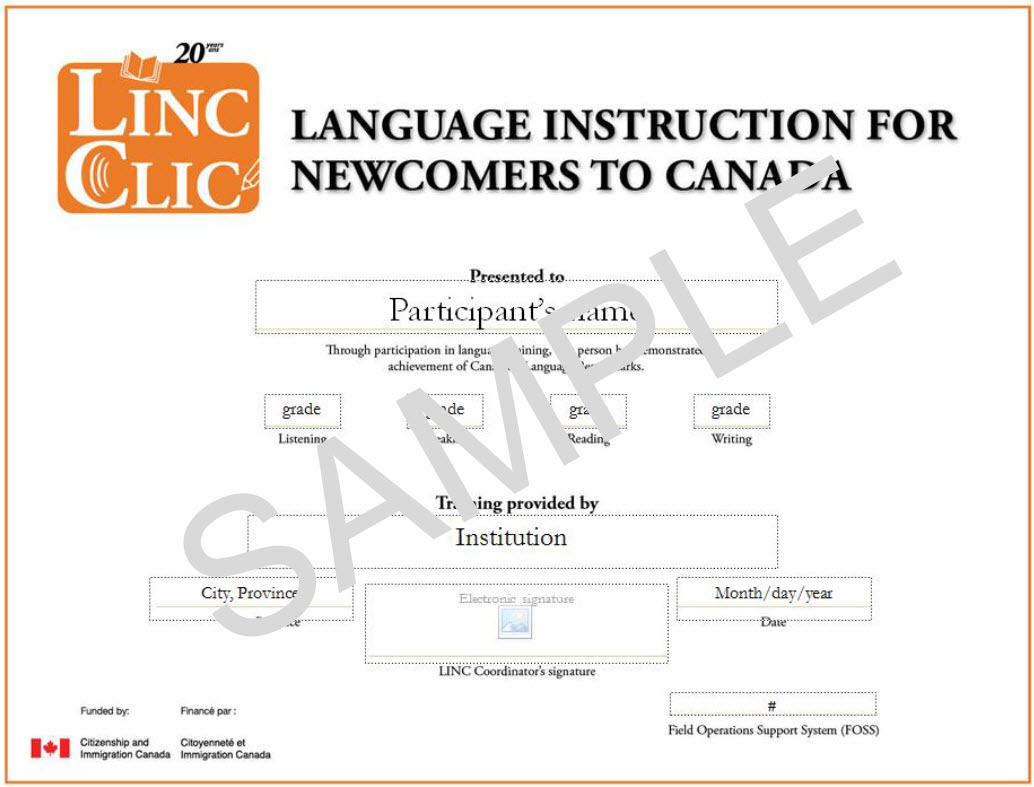I had the pleasure of presenting at the annual TEAM conference in Winnipeg this week. TEAM stands for “Teaching English as an Additional Language (EAL) to Adults in Manitoba”, a portmanteau term for an inclusive volunteer organization that puts on an ambitious program every year – there were 13 tracks in this year’s conference.
EAL is a key enabler of immigrant integration in Canada and I go way back with immigration: my father served as an immigration officer for 20 years and I spent some time growing up overseas. In my career, I’ve worked on several learning projects related to language learning and settlement at the federal and provincial levels, enough to know a fair bit about the immigration and settlement landscape here.
As usual, I adapted my evolving presentation about Open Badges and ePortfolios to language learning, using additional research. This was also an opportunity to talk about CanCred.ca, the Open Badge eCredential service that my company Learning Agents has recently launched in Canada, in partnership with Discendum, of Open Badge Factory fame:
Here’s the presentation, embedded from SlideShare:
[slideshare id=62464008&doc=team2016v02aforupload-160527115949]
I blogged about the broader landscape of Newcomer settlement back in April: (eCredential Pathways for Immigrants and Refugees). This post is more about the language learning side – my chance to reflect on new and old thoughts that occurred to me getting the presentation out in the context of the TEAM conference.
Migration = transformation
Picking up your life and moving it to another country is a marvelous opportunity to re-invent yourself, especially if the Plan A you arrived with isn’t working out. Maybe you’re having trouble getting your credentials recognized, or your English isn’t as good as you thought it was, or you’re having trouble building a network.
It’s an opportunity to re-think your career, your life purpose, even your identity. This opens the door for transformative learning tools such as ePortfolio, where you can begin to reflect on your life experience, your gifts, your interests and your emerging opportunities. Open Badge eCredentials can work with ePortfolios in mutually supportive, recursive ways: ePortfolio evidence packages that lead to Open Badges that fold into new evidence packages, etc.
Transformation can be a long journey
Learning seldom happens in a straight line: it can take place on multiple fronts at multiple rates at different times. This can be confusing and hard to track. Or it can seem glacial – too slow to track.
In EAL, there’s often a learning plateau around the middle levels of CLB 5-6, where progress seems to slow down. This can be disheartening for people trying to achieve CLB levels 7-8, generally agreed to be the employability level.

Recognizing learning achievements with Open Badges can help language learners visualize their continuing progress as they move through these development doldrums.
Educators of newcomers also need to learn, and in similar ways
Language learners and their professional instructors both qualify as adults with adult learning preferences and needs. Both need a mixture of formal, non-formal, informal and experiential, connected learning opportunities.
The British Council’s English Agenda does a good job of capturing this in their document Going forward: Continuing Professional Development for English Language Teachers in the UK. This slide from my presentation summarizes the approach:
Language learners and their educators are already being credentialed
Learners enrolled in Language Instruction for Newcomers (LINC) programs can earn LINC certificates with sufficient hours of instruction. According to South Eastman English and Literacy Services, these certificates can be used for Citizenship and to register for college or university classes.
Internationally, many scans of International English Language Testing System (IELTS) certificates can also be found on the Internet, such as this one posted on an immigration service website in India:
I think an Open Badge eCredential could do a more transparent and secure job of sharing this man’s language skills.Even better if it were in an ePortfolio.
Language learning is ripe for digital transformation
I was struck at the conference by the relatively low level of technology usage in the EAL community. There are some notable exceptions, and this was evident in the sessions about leveraging the affordances of mobile and web technologies for teaching. English Online comes to mind, for example.
But a speaker in the opening panel had to make the point that “technology” is not a new “thing”: teachers have always leveraged available technologies to get learning happening. I have a great deal of respect for the passion and dedication of EAL teachers, but I do think that is is an area for improvement.
I suspect that most learners are ready for change…
 Statista
Statista
There was push-back at the conference about an online community portal called Tutela.ca. Community members complained about the difficulty of finding resources by theme. Looking at the incredibly poor user experience of seeking resources using “Browse by Topic”, I’m inclined to agree, though the site promises a better experience in a forthcoming “Tutela 3.0”. I just hope the community has the patience to wait!
But I detected a underlying desire for a single place to go to get a canonical, authoritative, “approved” list of resources that teachers can use. This feels a bit like the passive “teach me” attitude that many of the same teachers complain about in their learners. I don’t think it’s going to happen, at least to the extent that they seem to desire, i.e. for all levels and audiences, centrally approved, constantly updated, permanently maintained… Yes, resource search can and should improve, but many of the resources will come from community peers and from strangers in other communities. Professional learning is a conversation, an ever-evolving stream of emergent and examined practice. This is what it means to be a professional.
Technology can help with crowd-sourcing the development of professional resources, such as in the example I provide in my presentation above about VIF International Education, a global education PD initiative, where teachers who develop robust learning resources are recognized by Open Badge eCredentials, killing two birds with one stone.

But the notion of crowd-sourcing and the culture of autonomous, blended learning in physical and virtual communities needs to be fostered for professionals just as it needs to be fostered for language learners.
Another clue that the community needs to embrace technology more: paper language portfolios. The pushback mentioned above was specifically about lack of tools and resources for Portfolio Based Language Assessment, a primarily formative, “assessment FOR learning” approach to tracking learner progress, ideally based on learner artefacts, but often on instructor “micro-assessments” of learner tasks.
[slideshare id=17462787&doc=pbla-maximizingafl2-130321113611-phpapp01]
Now I think PBLA is an awesome idea and I’m very proud that it was invented in Manitoba (as Collaborative Language Portfolio Assessment), but the recommended PBLA portfolio is still a 3-ring binder, albeit with some allowance for electronic archiving via CD-ROM. Several sessions at the conference were devoted to PBLA and some shared tools for delivering it, but the default technology was paper.
This seems odd in this day and age, especially when you consider that two of the four skills are Listening and Speaking. It seems to cry out for multimedia in an online Personal Learning Environment.
And this PLE doesn’t have to be a single-purpose language silo: it can later adapt to support employability and career development needs.
Start with Professional Development
 CASSP – Collaborative Australian Secondary Science Project
CASSP – Collaborative Australian Secondary Science Project
This blog is about Open Badges and ePortfolios as key enablers of transformative learning and there’s a lot of early traction in Open Badges for Educator PD, albeit mostly in the K12 sector:
I suggest that “Teaching the Teachers”, or at least helping them learn is a natural first step. This could build on development frameworks such as the British Council’s I quoted above, and/or the Competency Dictionary of the BC Settlement and Adaptation Program (despite its past linkage to ELSA):
You could even leverage the Scottish Social Services Council’s Open Badges strategy, which is built on their professional development frameworks:
Early areas for development could include PBLA implementation, technology-enabled language learning and recognition for resource development and mentoring – in addition to the easy stuff like conference/workshop recognition and certification.
Concluding remarks
We’d be thrilled if the language learning sector in Canada began using our recently launched Canadian eCredentialing solution, because we think it’s ideally suited for the job:
… but we’d be only slightly less thrilled if the EAL sector in Canada showed significant signs of going digital by adapting the global examples provided, using ANY solutions for ePortfolios and eCredentials. We launched our service to help accelerate adoption in this country. After all, it’s 2016!












